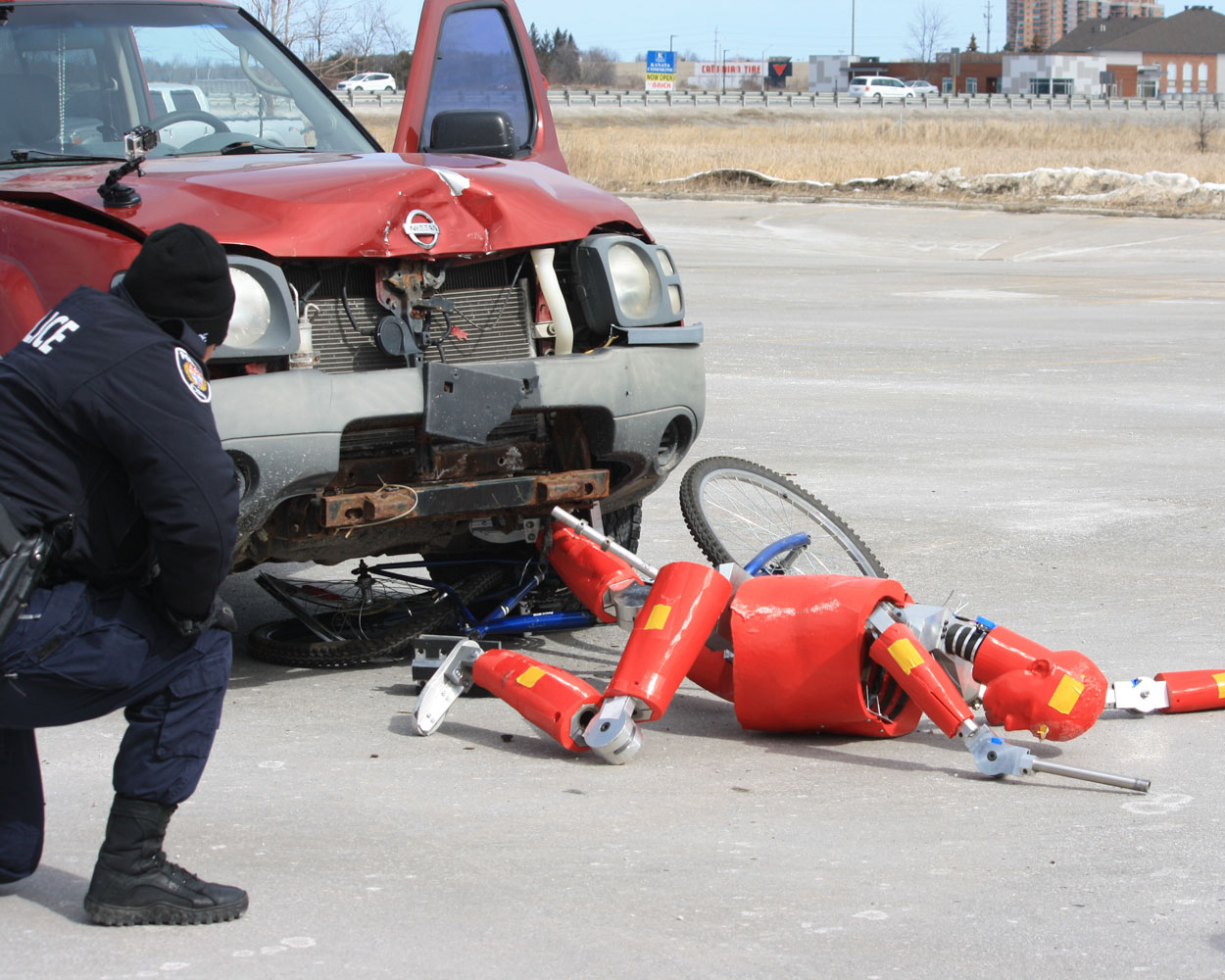Twenty of Carleton’s mechanical engineering and biomedical and mechanical engineering students teamed up with the Ottawa Police Collision Investigations Unit to conduct the final test in a six-year project outside of the Canadian Tire Centre on March 23.
The groups have been working together to collect data and statistics on rear-end collisions involving cyclists and cars using a dummy on a bike. The fourth-year students started building the track, remodelling the previous year’s dummy, and modifying the sensors in the dummy in September.
Emma Gibney, a fourth-year biomedical and mechanical engineering student who helped design the neck and spine of the dummy, explained the simulation to the Charlatan.
“So, what we’ve done is we’ve designed a crash test dummy with 3-D printed skin and a neck of similar flexibility and elasticity of a real neck so we can see head impact,” she said.
Gibney said inside the head of the dummy are sensors. During the test, the dummy was launched on a bike down a steel track at 20 km/h while a car hit it from behind. Over the course of the day, the students ran two tests with the car travelling at 30 km/h and then 50 km/h.
“The police car comes in from behind with our timing team, so we send out light signals to the police car to tell it to go and when they’ll be able to go so that the collision will happen and we watch the crash,” she said.
After the crash, the police read the data from the sensors in the dummy and are able to find out what kind of injuries are sustained in these types of crashes, Gibney said.
At 50 km/h, the car destroyed the bike, resulting in a cancellation of the previously planned 100 km/h test.
Andrew Speirs, a mechanical and aerospace engineering professor at Carleton, said the tests are important for both the police and students.
He said the project allows students to apply all of their engineering knowledge and skills into developing a working system that can have real-world impacts
“From a larger perspective, this is helping the police develop their collision reconstruction techniques. They have a lot of formulas that they use when there’s a car hitting another car or a car hitting a pedestrian, but the dynamics of a collision involving a cyclist are quite different, and so things move differently after the impact occurs,” Speirs said. “If they can see what happens, they can use their techniques and modify them appropriately, so they can understand what happens in these scenarios.”
Alain Boucher is one of the police officers with the Collision Investigations Unit who has been involved in conducting the tests with Carleton engineering students for the past six years. Boucher said the simulation data helps the unit understand how a crash happened and at what speed.
“In order for us to do that, we need to know where it first hit the cyclist and these type of crashes have helped us to look for that,” Boucher said.
According to Speirs, the tests this year were among the best over the past six years of the program.
“I think in terms of the impact, they were very realistic the police thought, and they got a lot of good data that they could make measurements on the ground, and then they’ll be able to compare that with what they saw,” he said. “I think it was a very successful day.”
Photo by Kassia Skorzewska






